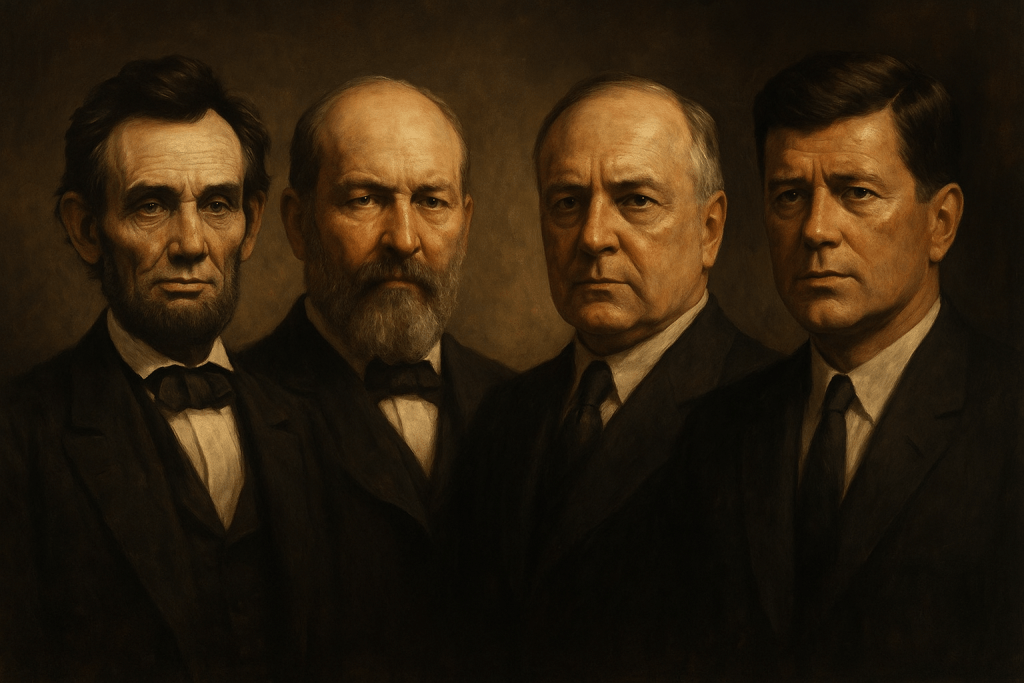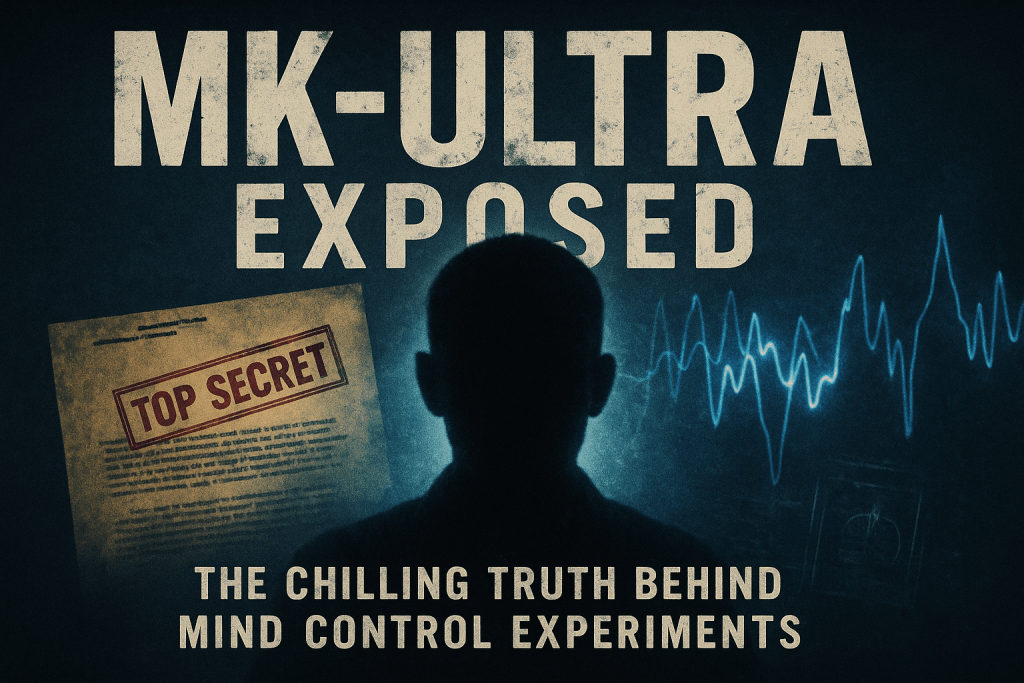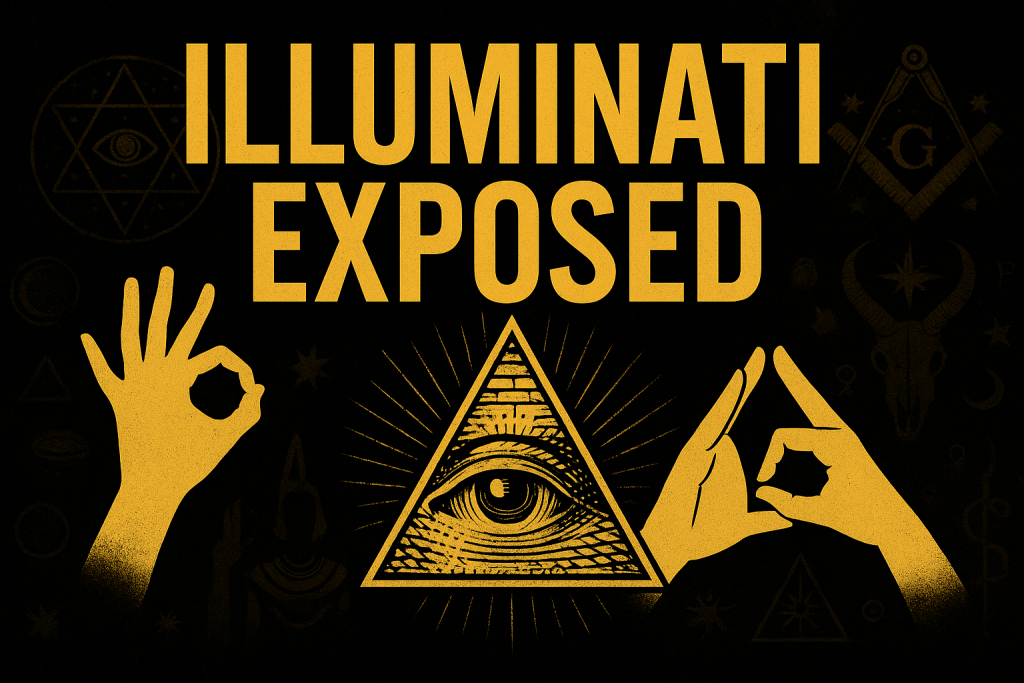
Introduction: Presidential Assassinations
Throughout American history, several presidents have met untimely deaths under circumstances that have fueled speculation and conspiracy theories. This article delves into the stories of these leaders, exploring the official accounts and the lingering questions that continue to captivate the public imagination.
🇺🇸 Abraham Lincoln
The President Who Tried to Rebuild a Broken Nation
In the spring of 1865, the American Civil War was drawing to a close. The Union had triumphed, and President Abraham Lincoln was preparing for the immense task of national reconciliation. But just as peace was settling over the land, an act of violence shattered the fragile calm.
On the evening of April 14th, Lincoln attended a play at Ford’s Theatre in Washington, D.C. At 10:15 p.m., John Wilkes Booth, a well-known actor and Confederate sympathizer, slipped into Lincoln’s private box and shot him in the back of the
The official story is that Booth acted out of hatred for Lincoln’s abolitionist policies. But many researchers argue it wasn’t that simple.
Booth wasn’t acting alone—at least three other men were involved in a coordinated plan to assassinate key members of the Union government. But who funded them? Why were some suspects conveniently killed during capture? Why did Secretary of War Edwin Stanton—who ordered the military tribunal—also oversee destruction of key evidence?
Some theorists suggest Stanton himself may have wanted Lincoln removed. Why? Lincoln had begun speaking of reconciliation with the South and avoiding harsh punishment. That threatened powerful Union generals, war profiteers, and even bankers looking to exploit the chaos of Reconstruction.
The question remains:
Did Lincoln die at the hands of a lone fanatic?
Or was his vision of peace too dangerous for others in power?
🇺🇸 James A. Garfield
The President Who Took on the Spoils System
James Garfield never wanted to be president. Yet in 1880, he was elected almost reluctantly—and almost immediately, he made enemies. Garfield spoke openly about dismantling the corrupt patronage system, where government jobs were handed out as political favors. He refused to play the game.
On July 2, 1881, just four months into office, Garfield was shot at the Baltimore and Potomac Railroad Station by Charles J. Guiteau, a deranged office-seeker who had been denied a diplomatic post. Garfield lingered in agony for 11 weeks before dying from infection.
Guiteau was executed, and the public was told it was the act of a madman. But critics of the official narrative pointed out inconsistencies:
Why did Garfield’s doctors ignore basic antiseptic methods, effectively worsening his condition? Why were major Republican power brokers like Roscoe Conkling silent? And why was Vice President Chester A. Arthur—connected to the very machine Garfield was dismantling—so quick to assume power?
Some historians believe Garfield’s assassination was not random. He was disrupting a well-oiled political racket, threatening deep-pocketed interests. The man who shot him may have been insane, but the people who benefited were not.
Was it just a tragic moment of madness?
Or was it the perfect timing for the system to protect itself?
🇺🇸 William McKinley
The President Who Opposed the Money Men
William McKinley steered the United States into the 20th century with calm and calculated authority. But behind his moderate policies, he was beginning to upset powerful industrialists and bankers.
He had won a second term in 1900, and many expected him to continue his pro-business stance. But insiders say McKinley had started listening more to reform-minded advisors—especially his vice president, Theodore Roosevelt. Whispers circulated that McKinley was considering tighter regulations on monopolies and possibly even revisiting gold standard policies.
Then came Buffalo, New York. On September 6, 1901, during a public reception at the Pan-American Exposition, McKinley was approached by a man pretending to shake his hand. Underneath a handkerchief, anarchist Leon Czolgosz pulled a revolver and fired twice. McKinley died a week later.
The official story points to radical ideology. But others noticed something strange:
Why was security so light, despite credible threats? Why was Czolgosz executed so quickly? Why were certain documents about McKinley’s policy shifts buried?
Some believe the assassination cleared the way for Roosevelt—seen as more controllable by certain banking factions despite his “trust-busting” reputation. Others think Czolgosz was manipulated, a pawn unaware of the larger interests behind his actions.
Was it an act of anarchist violence?
Or a reset by those who feared financial disruption?
🇺🇸 John F. Kennedy
The President Who Took On the Deep State
Dallas. November 22, 1963.
The moment the bullet struck, the nation changed forever.
John F. Kennedy was a president unlike any before him. Charismatic, wealthy, and idealistic—but also fiercely independent. He pushed back against the CIA after the Bay of Pigs disaster. He resisted military pressure to escalate in Vietnam. He clashed with the Federal Reserve, even issuing Executive Order 11110 to return currency control to the Treasury.
And then, he was killed.
Lee Harvey Oswald was blamed. A lone gunman.
Shot just two days later by Jack Ruby—himself deeply connected to organized crime.
To this day, over 60% of Americans believe the government is hiding something. And for good reason.
Multiple theories point to various suspects:
- The CIA, furious over Kennedy’s threat to “splinter them into a thousand pieces.”
- The Mafia, angered by his brother Robert’s relentless prosecutions.
- The military-industrial complex, wary of his push for nuclear disarmament.
- Vice President Lyndon B. Johnson, who had both motive and means.
The Warren Commission closed the case. But new documents, redacted names, and uncooperative agencies keep the mystery alive.
Who wanted JFK dead?
Maybe a better question is:
Who didn’t?
The Far Side of the Moon: What Did China’s Rover Really Find?

